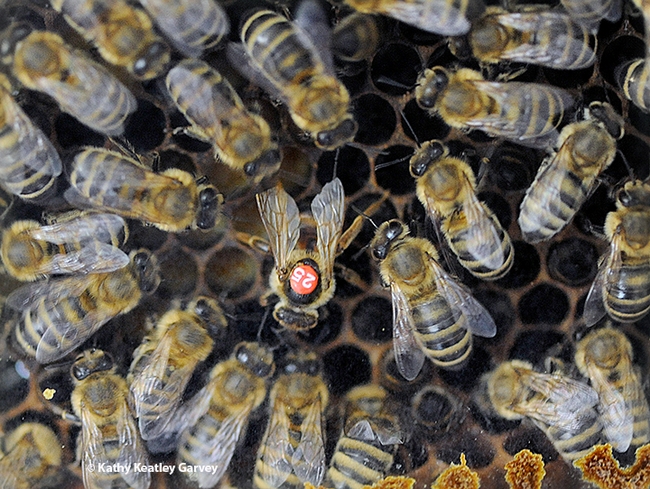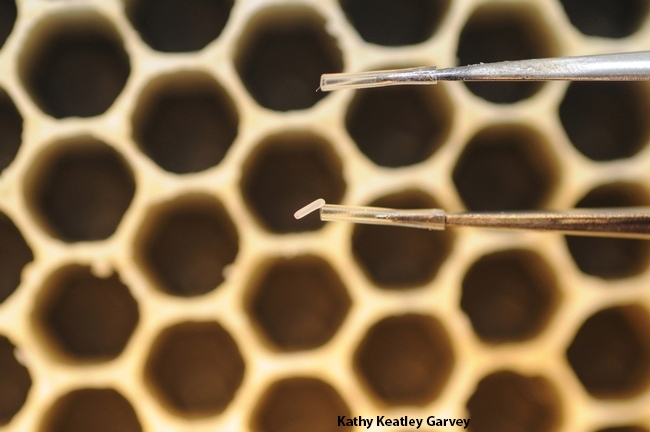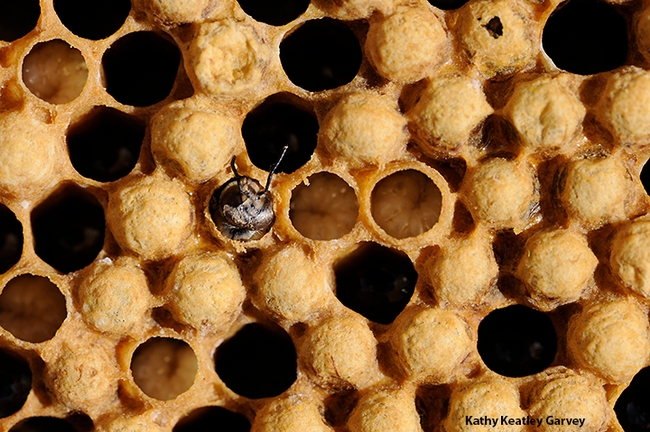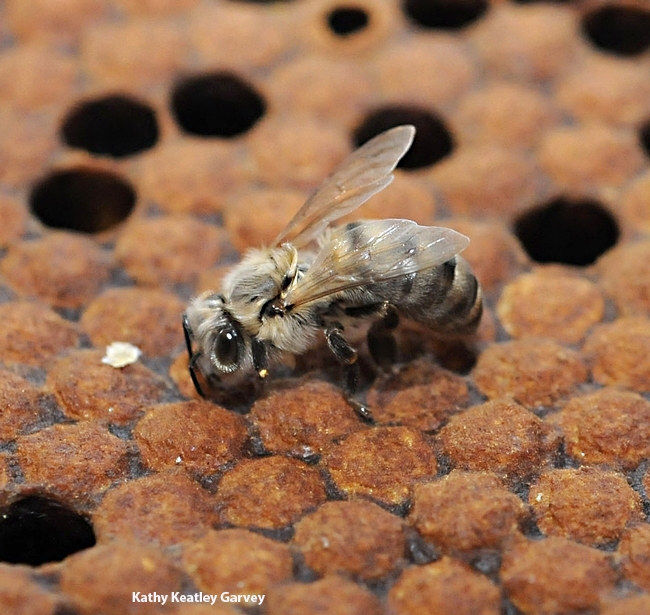It's a week before Christmas and it's not just the geese that are getting fat.
If you're thinking that the bathroom scale and you are not good friends, not to worry.
We remember the late Extension apiculturist emeritus Eric Mussen (1944-2022) of the UC Davis Department of Entomology, emphasizing the massive weight gain that occurs during the larval stage of the honey bee. He used to speak at scores of beekeeping functions throughout the year, and every time he talked about larval weight gain, he always drew a "Wow!" or "Incredible!" or "Amazing!"
"A honey bee egg weighs about 0.1 mg," Mussen told us. "The first stage larva weighs the same. Over the next six days of larval life the larva goes from 0.1 mg to around 120 mg. It defecates once, just before pupating, and the resulting adult bee weighs around 110 mg. Thus, the new bee weighs about 1,000 times the weight of the one-day-old larva."
Now get this:
"If a human baby, weighing eight pounds at birth, were to grow at the same rate, the baby would weigh 8,000 pounds, or 4 tons, at the end of six days."
Four tons in six days? Fortunately, what goes on with Apis mellifera does not apply to Homo sapiens.
Attached Images:

Queen bee laying an egg. A honey bee egg weighs about 0.1 mg, according to the late Extension apiculturist emeritus Eric Mussen, UC Davis Department of Entomology and Nematology. (Photo by Kathy Keatley Garvey)

Over the next six days, a tiny egg will soar to 120 mg. (Photo by Kathy Keatley Garvey)

Honey bee larvae grow fast. Here a bee, next to larvae, is ready to emerge. (Photo by Kathy Keatley Garvey)

Newly emerged honey bee. It weighs about 1000 times the weight of a one-day-old bee larva. (Photo by Kathy Keatley Garvey)